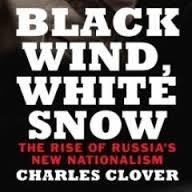Black Wind, White Snow: The Rise of Russia’s New Nationalism
The theory was renovated in the 1960s by the historian Lev Gumilev (1912-1992). Gumilev — the son of two famous Russian poets, Anna Akhmatova and Nikolay Gumilev — spent many years in the Gulag, where he met Petr Savitsky, the last survivor of the 1920s Eurasianists. Partly thanks to his inspiration, Gumilev devised a decidedly anti-Marxist theory of the rise and fall of peoples. Certain tribal groups, he argued, have at certain periods in history been gripped by a form of social solidarity he called passionarnost: creative energy, lust for expansion and ruthlessness combined with a capacity for suffering and endurance in pursuing the common cause. Passionarnost, he argued, not technological or moral progress, was the key to world history. The Soviet victory over Germany in the second world war showed that the Russians possessed this quality, and that in common with the peoples of Central Asia they formed a civilisation quite distinct from that of Europe.
As the Soviet Union approached collapse in the late 1980s, Gumilev’s theories were published and attracted many intellectuals. His books on the history of steppe nomads became bestsellers, partly because they read like pacy novels (indeed, some academics accused him of writing what was essentially fiction). One of those he inspired was Alexander Dugin, a dissident whose objections to Marxism were similar. According to Clover, Dugin had links with thinkers of the European New Right, who were denouncing the heritage of liberalism, the nation-state and US domination, and arguing that Europe needed to reinvent itself as an imperial power. Their thinking in turn derived from Halford Mackinder and the geopolitical theorists of Nazi Germany, who maintained that the decisive clashes in world affairs were between the oceanic powers headed by the US and the continental powers of Eurasia.
All these currents were combined in Dugin’s book, The Foundations of Geopolitics (1997). It became a textbook in the Russian General Staff Academy, where Dugin himself lectured — no longer a dissident but now a pillar of the establishment. The chaos of the 1990s in Russia suggested to many Russians that western-style democracy, far from being beneficial, was actually undermining their way of life. The expansion of Nato and its 1999 bombing campaign in Serbia seemed to confirm that the west was an enemy, and made many thinking Russians, including Putin, converts to a modified Eurasianism.
A word of warning: Russian politicians usually adopt ideologies not because they believe in them but because they are useful at certain stages of their careers. Dugin-modified Eurasianism is useful to Putin while he faces conflict in Ukraine combined with western sanctions, and while he challenges the “unipolar” model of international affairs imposed by the US. It does not follow automatically that he wants to restore the Soviet Union as “Eurasia”. If later he decides Russia needs to work more closely with the west, to defeat Islamist terrorism or to prevent conflict getting out of hand, then the tropes of Eurasianism will fall out of his discourse.
Clover’s approach, sober and gently sceptical, reflects the provisional nature of Putin’s ideology. He charts the paths by which Eurasian ideas are refracted through various movements, but usually refrains from firm conclusions. This is true to the spirit of Dugin, whom he interviewed at length. Dugin is a conscious postmodernist: he will often proclaim a principle while simultaneously standing back to “deconstruct” it. He provides a repertoire for “political technologists” who manipulate ideologies in response to tactical needs.
Political technology has limits, though: at some point Putin might find himself in a situation where he cannot, with dignity, back away from his own rhetoric. Then Clover’s book will be an indispensable guide.
Geoffrey Hosking

